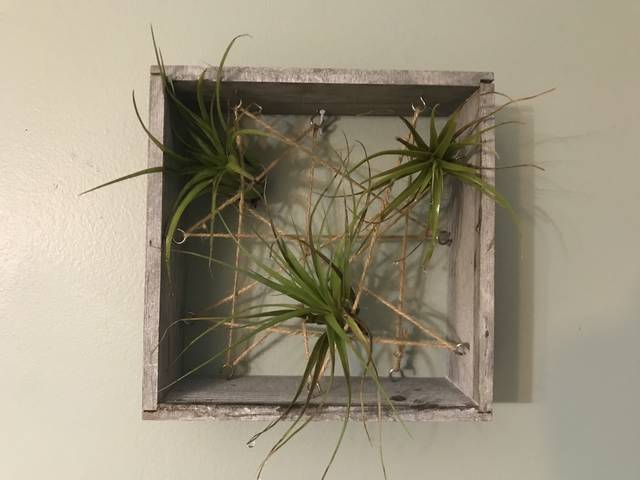Air plants are fun to grow, but they do require some special care
Air plants have made a comeback. These members of the bromeliad family, known as Tillandsia, were popular with 1970s houseplant growers, and they’re now back in vogue. While many folks think these cute little plants survive on just air, they’re mistaken. Air plants need a little more TLC than you might think in order to perform their best.
Air plants are named as such because they’re epiphytes, which means that instead of their roots being anchored in the ground, they live in trees. They use their small roots to attach themselves to branches, instead of soil.
Air plants don’t survive on air alone. Instead they absorb rain water and nutrients through their leaves and small roots. There are many different species of Tillandsia, all of which are native to humid, warm locations in the New World, including the southeastern U.S., and Central and South America.
Since air plants absorb water through their leaves and roots, they should be kept in a humid room, such as a bathroom or kitchen, as long as it has a west, east-, or south-facing window. But, even the most humid room does not provide enough necessary moisture for air plants, especially during the winter months when forced air heaters dry the plants out quickly.
How to water
To water Tillandsias, fill a bowl or sink with lukewarm water and soak the plants for a half hour once per week. During the summer, you can reduce the frequency to once every two weeks if your home is humid. Be sure both the roots and leaves are fully submerged for the best results.
You can also water air plants by spraying them with a water bottle, but you’ll need to do this every day or two for the plants to receive adequate moisture, especially during the dry winter months. Again, be sure to wet both the leaves and the roots.
Regardless of which watering method you use, do not use water that’s been treated with a softener, and allow tap water to sit for 24 hours prior to use so that the chlorine can dissipate.
If the leaves of your air plant are curled or folded, they should be watered more frequently. If the tips of the leaves turn brown, be sure your irrigation water does not contain any salts or chlorine.
You can also fertilize your air plant every three months with a liquid organic houseplant fertilizer diluted to half the recommended strength. Add the fertilizer to the water prior to soaking the plants so they’ll be fed at the same time.
Air plants are really fun to grow, and there are all sorts of creative ways you can display them. Just be sure to remove the plants from their display to water and feed them and don’t return them to their display until the plants have fully dried. Try growing a few different species together for an interesting combination of textures and appearances.
Horticulturist Jessica Walliser is the author of several gardening books, including "Attracting Beneficial Bugs to Your Garden," "Good Bug, Bad Bug," and her newest title, "Container Gardening Complete." Her website is jessicawalliser.com. Send your gardening or landscaping questions to tribliving@tribweb.com or The Good Earth, 622 Cabin Hill Drive, Greensburg, PA 15601.
Remove the ads from your TribLIVE reading experience but still support the journalists who create the content with TribLIVE Ad-Free.

